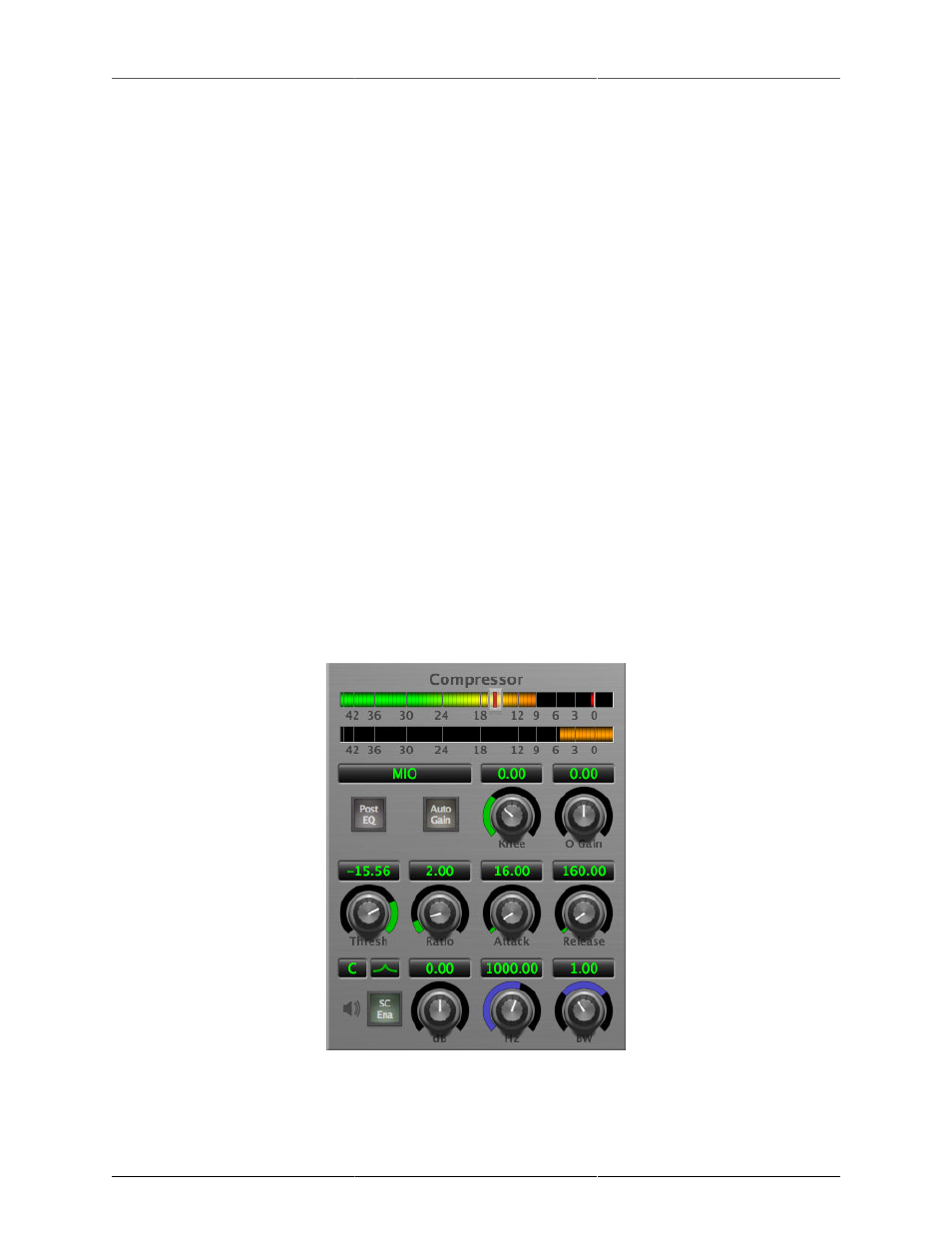Filter band boost/cut control, Filter band frequency, Filter bandwidth – Metric Halo Production Bundle User Manual
Page 45: Compressor, 45 filter band frequency, 45 filter bandwidth, Compressor with filtered sidechain

Processing
45
Filter Band Boost/Cut Control
Use this knob (labeled “dB” in the illustration) to adjust the gain of the filter band for the peaking, high and low
shelf filter types. This parameter is ignored for the other filter types. In the shelving filters the maximum boost
is +12 dB and the maximum cut is -24 dB. In the peaking filters the maximum boost/cut is ± 24 dB. When you
increase the boost for a filter band above 15 dB, the filter gets nicely aggressive and resonant.
Filter Band Frequency
Use this knob (labeled “Hz” in the illustration) to adjust the characteristic frequency of the filter. For the peaking
and bandpass filter types this controls the center frequency of the filter. For the high and low cut filter types this
control adjusts the 3 dB point of the filter. For the shelving filters this control adjusts the shelf transition point.
Filter Bandwidth
Use this knob (labeled “BW” in the illustration) to adjust the characteristic width of the filter. This control only
has effect for peaking, shelving and bandpass filter types. Please note that this parameter controls the bandwidth
(measured in octaves), not the quality factor (or “Q”). If you have been using Q controls, the numbers will
be backwards from what you are used to. Small numbers mean narrow filters and large numbers mean wide
filters. For peaking and bandpass filter types, this parameter controls the bandwidth of the filter in octaves. For
the high and low shelving filter types this parameter adjusts the amount of dip/peak and the slope of the shelf.
When this parameter is set to 0.1 you will get the largest dip/slope available and when the parameter is 2.5,
you will get a classic first order shelf (which has a transition band that is about 1 decade wide; e.g. if it is a
high shelf with a frequency of 10 kHz and a gain of 10 dB, the gain will be at 0 dB near 1kHz).
Compressor
Depending on the state of the “Post EQ” button (the default state is for the compressor to come first in the signal
chain), the next block in the signal processing chain is the compressor. The compressor is used to adjust the
high–level dynamics of a signal. As with the gate, the sidechain can be used to make the compressor frequency
sensitive (so it can be used like a de-esser) or to reduce the gain of the signal in response to some external
event (this allows the compressor to be used like a ducker or for other creative effects).
Figure 9.4: Compressor
Often, you will want to compress the signal before you equalize it. Sometimes you will need to equalize the
signal before you compress it. ChannelStrip provides that flexibility with the “Post EQ” button. This is a very
